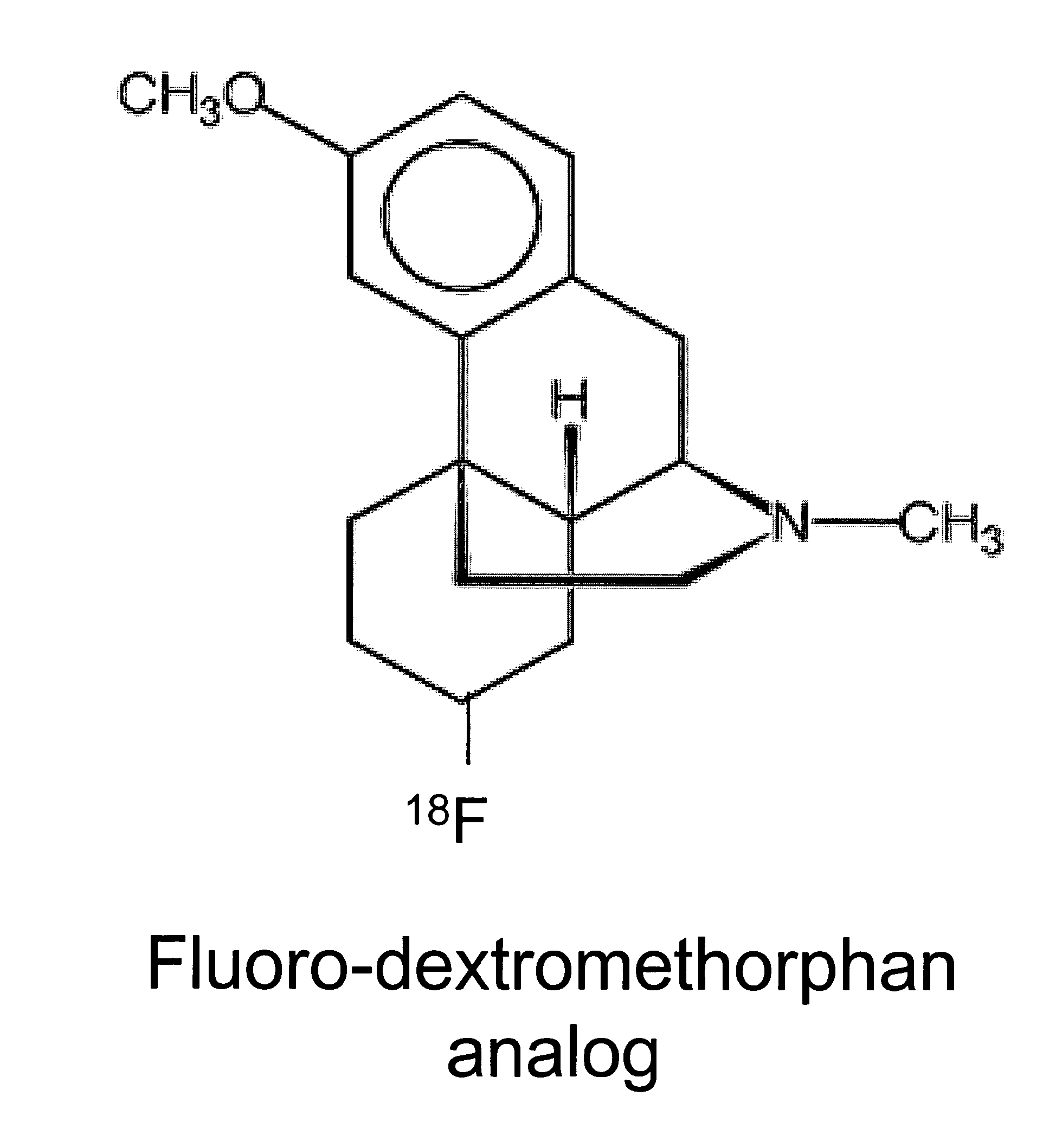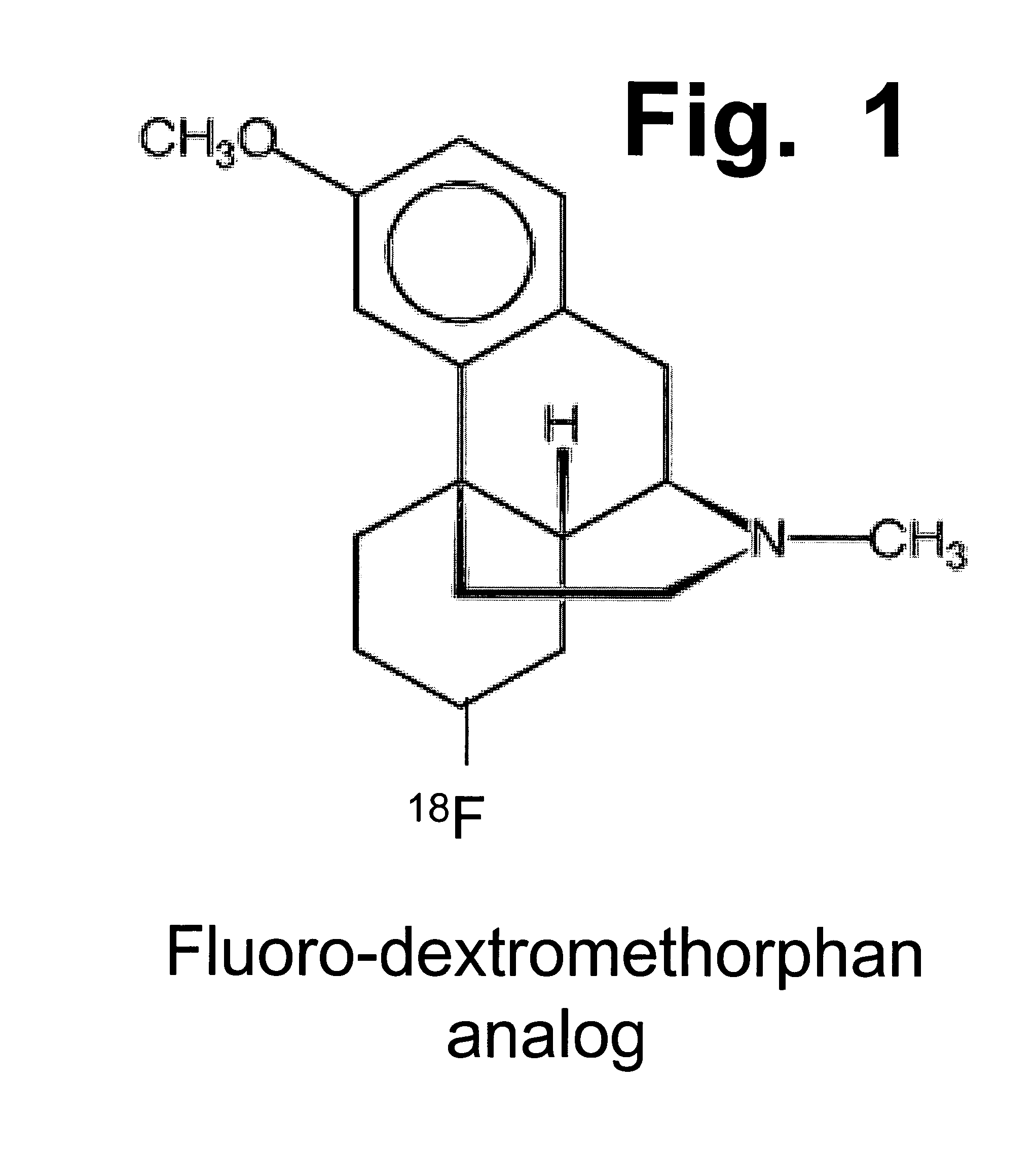Enhancement of impaired motor and mental functions, using dextromethorphan and oxidase enzyme inhibitor
a technology of oxidase inhibitor and dextromethorphan, which is applied in the field of enhancing impaired motor and mental functions, can solve the problems of head injuries, inability to control emotions and emotional displays, and insufficient benefits of those tests to justify larger trials, so as to improve motor control skills, improve ability to swallow and/or speak, and improve the effect of walking
- Summary
- Abstract
- Description
- Claims
- Application Information
AI Technical Summary
Benefits of technology
Problems solved by technology
Method used
Image
Examples
example 1
First Patient with Amyotrophic Lateral Sclerosis
[0085]The patient described in this first example is a male who began to have problems with his left foot in September 2000, while in his late 40's. His legs gradually weakened, leading to problems walking. He was diagnosed with amyotrophic lateral sclerosis (ALS, also known as Lou Gehrig's disease). As his disease progressed, he suffered from weakness in his arms and hands, increased saliva production, difficulty in speaking and swallowing, and fairly frequent choking. Those problems led to difficulty in eating, and he began losing weight.
[0086]He also began to experience problems controlling his emotions; several times a week, he would inexplicably become tearful. Because of this problem, he was enrolled in a clinical trial of DM / quinidine for emotionality, at a daily dosage of 30 mg each, every 12 hr, for 60 mg of each per day.
[0087]In a follow-up consultation, he reported that his emotionality was well controlled, and his speech wa...
example 2
Second Patient with ALS
[0092]The patient described in this second example is a male in his 60's, who began to experience problems with his voice (including hoarseness) in June 2002. Subsequently, his right hand became weak, and he began to have difficulty walking. He was examined and diagnosed as suffering from ALS. When first seen by the Applicant, in September 2003, he reported difficulties in swallowing, eating, and speaking, involving saliva accumulating in his mouth, food getting stuck in his throat, loss of weight, etc. He was also suffering from emotionality, and enrolled in a trial of DM / quinidine. During a follow-up examination about 3 months later, he still complained of occasional choking, but he reported that he was eating more normally, and suffering from fewer problems with swallowing. In addition, his clarity of speech was substantially improved.
[0093]When interviewed again seven months later, he reported that he was still eating normally, and he was no longer bothere...
example 3
Patient after Head Injury and Coma
[0095]The patient described in this example is a male in his 70's, who suffered from subdural bleeding after falling from a ladder in December 2002. He was comatose for six weeks. After emerging from the coma, he suffered from left-side weakness and difficulty speaking. As part of his rehabilitation, he was given speech therapy until May 2003. After completion of therapy, his speech was somewhat better, but still slurred and “garbled”. He also suffered from drooling, and stated that his mouth and throat always seemed to be “congested”, and that he frequently choked on food or liquids.
[0096]This patient also suffered from severe emotionality, involving an average of twenty to thirty episodes of crying each day. Because his neurologist had heard of DM / quinidine controlling emotionality in earlier trials, the patient was enrolled in an open-label trial involving the use of that drug combination, in June 2003.
[0097]Approximately one month later, in a fo...
PUM
| Property | Measurement | Unit |
|---|---|---|
| voltage | aaaaa | aaaaa |
| voltage | aaaaa | aaaaa |
| areas | aaaaa | aaaaa |
Abstract
Description
Claims
Application Information
 Login to View More
Login to View More - R&D
- Intellectual Property
- Life Sciences
- Materials
- Tech Scout
- Unparalleled Data Quality
- Higher Quality Content
- 60% Fewer Hallucinations
Browse by: Latest US Patents, China's latest patents, Technical Efficacy Thesaurus, Application Domain, Technology Topic, Popular Technical Reports.
© 2025 PatSnap. All rights reserved.Legal|Privacy policy|Modern Slavery Act Transparency Statement|Sitemap|About US| Contact US: help@patsnap.com


